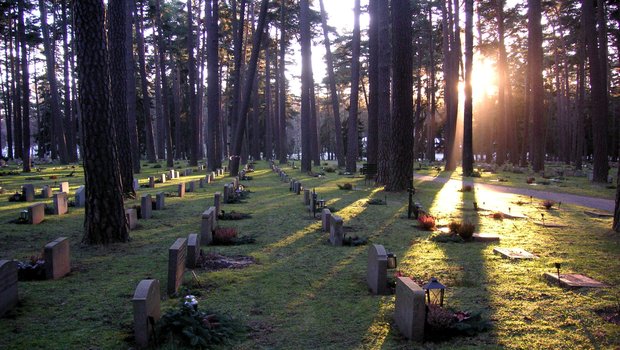Swedish funeral attendance shrinking
SWEDEN — The average number of funeral attendees is now about 24, down from 49 just three decades ago.
Ann-Margret and Christine, who only provided their first names, were related neither by law nor by blood, but belonged to the same Swedish family through a complex web of marriages, divorces and deaths. “My children used to call Ann-Margret “grandpa’s girlfriend” and that was that, it was no big deal,” Christine recalls. “That was just what our family looked like.”
Ann-Margret, who had no children, outlived her boyfriend by a decade. She died alone in 2011. Christine and her husband, as well as two other relatives, attended the funeral in Stockholm, as did a former neighbor. Five people in all.
Such sparse attendance has grown more common in Sweden. Just 30 years ago, the average number of people attending funerals in the country was 49. Today, it’s at 24. That’s lower than in Germany, which has a household occupancy rate almost as low as in Sweden, but where most funerals in a mid-sized town draw 30 to 40 people, according to an estimate from the Germany Funeral Directors Association.
In Stockholm, dubbed by many Swedish citizens and media as Europe’s “Singles Capital,” the sinking-attendance trend appears most acute, as new figures reveal they are not just living alone, but increasingly dying alone. One in 10 deceased Stockholmers is now laid to rest with no family or friends present at all – more than double Sweden’s national average.
Some 80 coffins arrive each week at the crematorium in the grounds of Skogskyrkogården, the Stockholm cemetery that UNESCO has designated as a World Heritage Site. The same number arrives at Stockholm’s second crematorium to the northwest.
By the time the employees handle a coffin, one can’t tell if it has come from an well-attended ceremony or from a funeral parlor with no speeches and few frills. “We don’t judge,” says Ulf Lernéus, president of the Swedish Funeral Directors Association. “Many feel they have a very good reason not to have a ceremony.”
Those reasons vary. Not long ago Lernéus met a woman whose husband’s dementia had made him unreachable nine years before his death. There was no ceremony. “She had grieved already. I found her explanation touching,” Lernéus said. “It’s important that we don’t disparage those who chose not to (have a ceremony).”
With as many as one in 10 deceased Stockholmers now laid to rest by undertakers and not by family, the numbers provoke the question why. Sweden has the lowest household occupancy rate in Europe, at two persons on average. Only Germany has a similar rate, according to Eurostat. In Stockholm, living alone is the new norm. About three in five households have just one resident.
Over the years, observers have pinned the trend on the individualist welfare state. A Swedish documentary released last year, “The Swedish Theory of Love,” asked if the Social Democrat experiment had come at a price. “Loneliness is a real problem,” filmmaker Erik Gandini told the newspaper The Local, citing a Red Cross study that found 40 percent of Swedes feel lonely.


Leave a Comment
You must be logged in to post a comment.